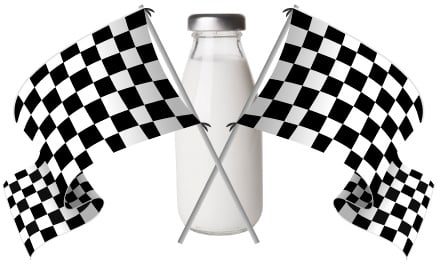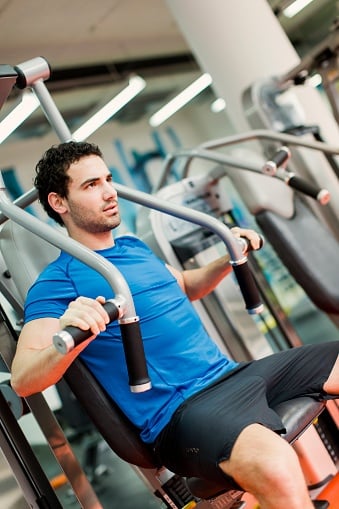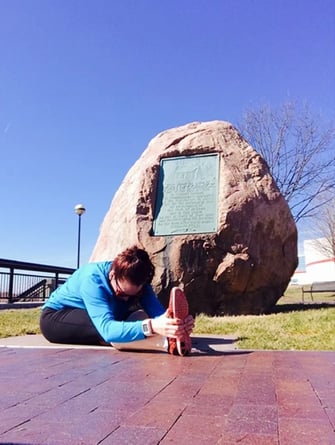 Starting your fitness journey is always an exciting step forward, but it is essential to make sure you are listening to your body and prioritizing your recovery and self-care. Many people tend to neglect their bodies' needs and push themselves past their limits, which isn’t necessarily a bad thing. The importance of recovery and self-care play a crucial role in ensuring your long-term success in the gym, and one mistake can lead to a possible injury that can take away and/or limit that progress.
Starting your fitness journey is always an exciting step forward, but it is essential to make sure you are listening to your body and prioritizing your recovery and self-care. Many people tend to neglect their bodies' needs and push themselves past their limits, which isn’t necessarily a bad thing. The importance of recovery and self-care play a crucial role in ensuring your long-term success in the gym, and one mistake can lead to a possible injury that can take away and/or limit that progress.
The Importance of Recovery
Recovery is one of the most important aspects of any fitness regimen. Giving yourself enough time to recover helps your body repair and strengthen itself. Without giving the proper recovery your body needs can lead to a higher risk of fatigue, decreased performance, and increased risk of injuries. Here are a few key components to ensuring you have an effective recovery period:
- Rest Days: Incorporating rest days is essential in allowing your body to heal and grow your muscles. You typically want to aim between 1-3 times a week depending on your fitness level and intensity for your workouts, so it may vary from person to person.
- Sleep Quality: Quality of sleep is a must for effective recovery. Anywhere between 7-9 hours a night is optimal to support muscle repair, hormone balance, and overall mental and physical health. Maintaining a consistent sleep routine will help manage your body's recovery each day.
- Hydration and Nutrition: Proper hydration and nutrition play a significant role in your body’s growth and recovery. Ensuring that you are drinking plenty of water during the day, and focusing on a balanced diet with protein, healthy fats, and complex carbohydrates will keep your body properly replenished and aid in muscle growth and repair.
Self-Care Practices
- Mobility and Stretching: Practicing stretching and focusing on mobility work regularly can help enhance flexibility, reduce muscle soreness, and prevent injuries. Incorporating dynamic stretching before workouts and static stretches after workouts helps maintain your muscle's elasticity and joint health. This can help with knee pain, lower back issues, and posture over time.
- Mindfulness: Mental wellness is just as important as physical wellness. Practicing mindfulness can help reduce stress, improve your focus, and enhance your overall well-being. Focus on relaxing the mind for a few minutes a day to help clear your head, such as deep-breathing exercises to calm the mind and body. This can be paired with your static stretches to help your mind and body at the same time.
- Active Recovery: On rest days, engaging in active recovery activities such as swimming, biking, yoga, or walking can help promote blood flow, reduce muscle soreness, and aid in muscle recovery without straining your body. Ensure that you are keeping a low intensity when engaging in these activities.
Prioritizing your recovery and self-care can play an important role in enhancing your performance, maintaining a balanced lifestyle, and helping prevent injuries. These practices will not happen overnight and will take dedication and time to achieve but will help you in the long run. Embrace, motivate, and stay consistent, and embark on your fitness journey prepared and ready to take on any challenge.
If you're unsure where to start or want to ensure you have the right balance between your fitness goals and recovery, or if you're simply looking to work with a professional, NIFS offers personal trainers who can help guide you every step of the way. Take the next steps with the support you need!


 Over the past six to eights weeks, I have been creating summer workout manuals for the teams that I work with during the school year. These manuals are meant to bridge the strength and conditioning gap between the time they leave for summer break and when they return for the fall semester. There is much to be gained, or lost, through a summer of hard work (or lack thereof). Although summer break is a true “break” for most athletes academically, there never really is a true break for training.
Over the past six to eights weeks, I have been creating summer workout manuals for the teams that I work with during the school year. These manuals are meant to bridge the strength and conditioning gap between the time they leave for summer break and when they return for the fall semester. There is much to be gained, or lost, through a summer of hard work (or lack thereof). Although summer break is a true “break” for most athletes academically, there never really is a true break for training.
 With the Indianapolis 500
With the Indianapolis 500  Building muscle is perhaps the most common goal (second to fat loss) of an exercise program. Many people eventually hit a plateau with exercise routines and muscle-gaining processes and find it increasingly difficult to continue putting on new muscle. Once the body becomes too familiar with certain exercises or a certain style of training, your results will be hindered.
Building muscle is perhaps the most common goal (second to fat loss) of an exercise program. Many people eventually hit a plateau with exercise routines and muscle-gaining processes and find it increasingly difficult to continue putting on new muscle. Once the body becomes too familiar with certain exercises or a certain style of training, your results will be hindered.  We know it is encouraged by fitness professionals, and included at the end of group exercise classes, but I want to ask you, personally: how many times after a workout do you actually take the time to cool down?
We know it is encouraged by fitness professionals, and included at the end of group exercise classes, but I want to ask you, personally: how many times after a workout do you actually take the time to cool down?  There are so many things in life that can affect different aspects of the human body, and stress is one of the biggest! During a stressful time in life, the body can undergo several physiological changes that can be detrimental to your overall health. Though sometimes we cannot avoid certain stressors that fall into our path of life, there are some things that can be done to help you cope during those times.
There are so many things in life that can affect different aspects of the human body, and stress is one of the biggest! During a stressful time in life, the body can undergo several physiological changes that can be detrimental to your overall health. Though sometimes we cannot avoid certain stressors that fall into our path of life, there are some things that can be done to help you cope during those times.